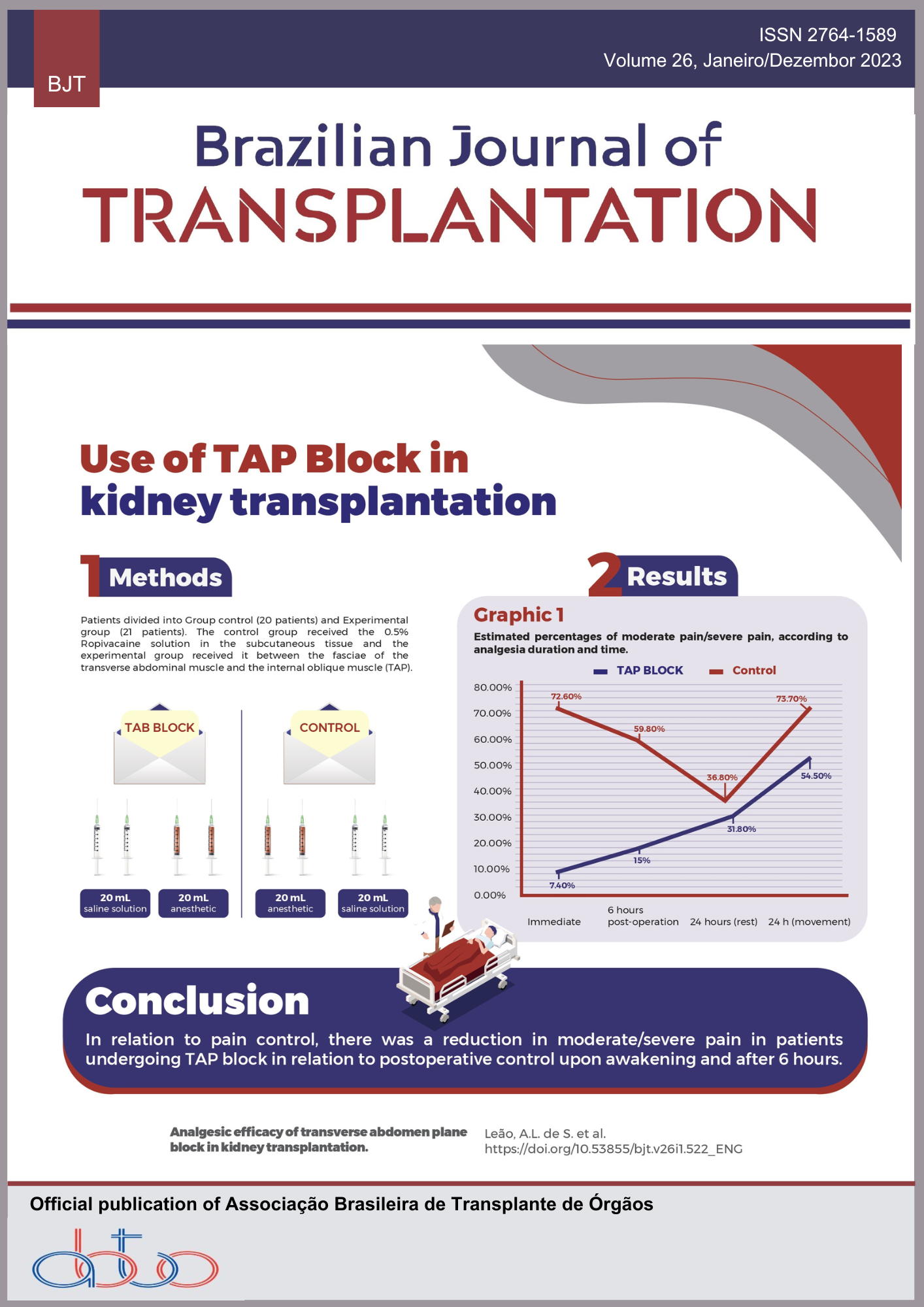Is There Still a Role for Urine Cytology in Kidney Transplantation? Experience Report in a Teaching Hospital
Keywords:
Urinary Sediment Analysis, Kidney Transplantation, Opportunistic Infections, Diagnosis, Cytology, Biological MonitoringAbstract
Introduction: Urinary cytology has been used as a monitoring strategy for kidney transplant patients, live under chronic immunosuppression, as it is a non-invasive and low-cost method. The early detection of infections can prevent possible dysfunctionand graft loss. However, its use has been decreased. Methods: We conducted a prospective study on voided urine samples from 29 consecutive patients undergoing kidney transplantation over a continuous period of 17 months, collected during their first-year post-transplantation. One technician prepared the samples by cytocentrifugation, Papanicolaou staining, and one pathologist analyzed them. Decoy cells (DCs) positive samples were prepared, by other two technicians, for contrast phase analysis, ultrastructural study, and immunofluorescence for SV40 T antigen. Results: We evaluated 252 urine samplesfrom26 patients. Two consecutive samples (0.8%) out of five, from the same patient (3.8%), referring to the fourth- and fifth-week post-transplant, showed low-grade squamous intraepithelial lesions; only rare epithelial cells with atypia of undetermined significance were detected (0.4%) in the sample corresponding to the sixth month post-transplant. The patient’s subsequent gynecological examination and Pap smear revealed no changes. Pseudohyphae and fungus yeasts were found in five samples (2.0%) from four patients (15.4%). Trichosporon sp. was identified in the urine of one of these patients. Decoy cells were detected in 25 samples (9.9 %) from six patients (23.1%). Two patients had sustained DCs shedding; one of them, presenting dirty background smears, developed Polyomavirus-associated nephropathy. Ultrastructural study of DCs showed icosahedral viral particles. Immunofluorescence (SV40 T antigen) was positive in DCs nuclei. Analysis by contrast phase was successful in samples with numerous DCs. Conclusion: Systematic urinary cytology after transplantation helps detect some infection signs. Patients with sustained DCs shedding and dirty background smears deserve special clinical attention. Electron microscopy andimmunofluorescence (SV40 T antigen) are alternative techniques to detect polyomavirus reactivation. The findings suggest that urinary cytology still plays a role in kidney transplantation.
Downloads
Downloads
Published
How to Cite
Issue
Section
License
Copyright (c) 2023 Ana Luisa Figueira Gouvêa, Fabiana Rabe Carvalho, Ana Lucia Rosa Nascimento, Rachel Ingrid Juliboni Cosendey, Camila de Melo Carvalho Nascimento, Jorge Reis Almeida

This work is licensed under a Creative Commons Attribution 4.0 International License.









